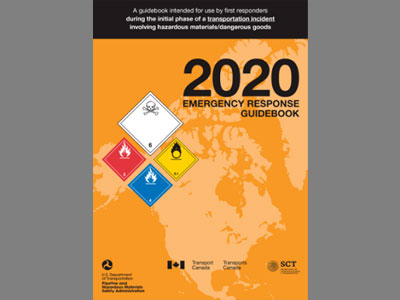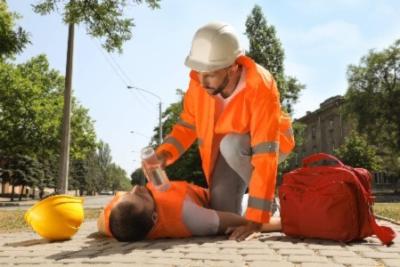 |
Collaboration with Team Members for Paraprofessionals |
1.00 |
This course covers collaboration with team members for paraprofessionals. You will learn what collaboration looks like in the school setting and what it means to use effective collaboration strategies. This course will also dive into what it means to be an effective communicator in the professional setting. |
 |
Emergency Response Guidebook Activity |
1.50 |
This course is an activity that requires the first responder to utilize the Emergency Response Guidebook to solve a variety of problems. The solution to each of these problems can be found using the 2020 Emergency Response Guidebook Version. Students will need to have a copy of the Emergency Response Guidebook Version 2020 to complete this activity. A 2020 Emergency Guidebook PDF is available for download in this lesson if a copy of the book is not available to the student.
It should be noted that this is an in-service training activity. The student must have prior knowledge and training regarding the Emergency Response Guidebook prior to engaging this activity.
|
 |
Understanding Poverty and Practical Strategies (CDA 3 & 4) |
2.00 |
This course empowers early care and education professionals to build strong relationships with families facing economic challenges. Delve into the realities of poverty and its impact on family dynamics. Discover practical communication strategies tailored to bridge understanding and effectively connect families with essential resources and support networks. Watch trust and collaboration flourish as you create a truly inclusive and supportive learning environment for every child. |
 |
Electrical Safety |
0.75 |
This course covers OSHA’s role and standards regarding electrical safety/hazards, defines the basic fundamentals of electricity, identifies and recognizes safety hazards, and describes protection methods against electrical hazards.
|
 |
Driving Safety Off-Road Vehicles |
1.50 |
This course teaches participants that defensive driving applies not only to licensed vehicles such as cars and trucks, but also to unlicensed vehicles such as golf carts and gators. Participants will learn guidelines for use of service carts, proper driving and operating procedures, how to carry loads, and precautions to take for pedestrians and driving at night. |
 |
Compressed Gas Safety |
0.75 |
Compressed gases are a convenient resource for many different jobs and activities. This convenience comes along with potential risks that can be remedied through safety measures and practices. This course covers the use of compressed gases and safety measures/practices for compressed gases.
It is just one of many health and safety courses we offer. This course will prepare you to safely handle compressed gases in any situation. |
 |
Heat Illness |
0.75 |
This course covers the basics when it comes to heat-related illnesses. The topics discussed will include warning signs, types of heat-related illnesses, and how to prevent these illnesses. |
 |
Outdoor Personal Protective Equipment (PPE) |
0.50 |
Personal protective equipment, commonly referred to as “PPE,” is equipment worn to minimize exposure to various hazards. Examples of PPE include gloves, foot, and eye protection, protective hearing devices (earplugs, muffs), hard hats, respirators, and full-body suits. This course covers protecting yourself from hazardous work-related activities with Personal Protective Equipment. |
 |
Managerial Leadership: Motivating Employees Through Change (Instructor Guide) |
0.50 |
Your organization’s vision was created to inspire and unite the members of the organization as they work toward achieving common goals. Change can distract employees from the vision because going through the change process can be intensely personal and emotional. Remembering the vision and its purpose can keep your employees focused on their role in the company.
In this course you will learn to: motivate employees through a change and prepare for difficulty, and overcome resistance and resolve conflict.
This Instructor's Edition of this course includes notes and suggestions to assist you in presenting the material, whether in an in-person classroom setting or as an instructor-led online or distance-learning course. It also provides you with the answers to questions found in mid-lesson activities, as well as in the quiz that concludes the course. |
 |
Introduction to Fireground Communications |
0.50 |
This course defines communication and identifies five components of a fireground communication model. Each component is described in detail and a procedure for implementing the components is reviewed. The different types of common fireground communications are described and examples of each are given. |











